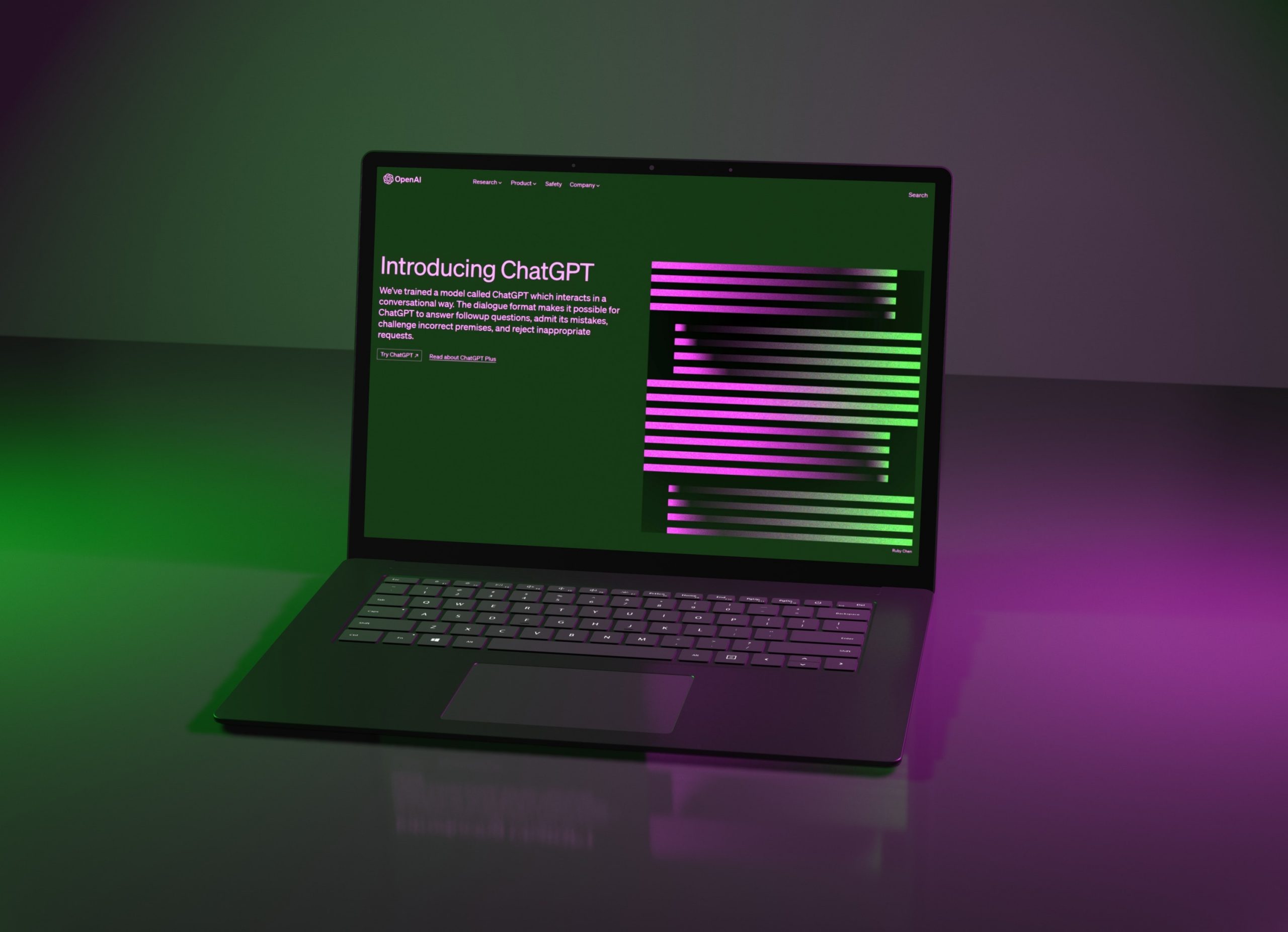We at WeSoftYou understand the importance of effective supplier relationship management (SRM) for businesses. In today’s competitive market, having a solid supplier management solution strategy is essential for optimizing supplier performance, managing risks, and achieving cost savings. That’s why we have put together this comprehensive guide on how to build custom supplier relationship management software tailored to your unique business needs.
What is Supplier Relationship Management?
Before diving into the process of building custom SRM software, let’s first understand what supplier relationship management is and why it’s crucial for your business.
Supplier relationship management encompasses the strategies, processes, and technologies used by businesses to effectively manage their interactions and relationships with suppliers. It involves activities such as supplier selection, contract management, performance evaluation, and continuous improvement.
Effective supplier management system enables businesses to streamline their procurement processes, reduce costs, mitigate risks, and foster collaboration with suppliers. By leveraging technology, businesses can automate and optimize these processes, leading to increased efficiency and better decision-making.
But what exactly makes supplier relationship management so important? Let’s explore further.
The Importance of Supplier Relationship Management Software
Supplier relationship management plays a significant role in driving operational excellence and enhancing business performance.
A well-implemented supplier management solution strategy allows businesses to:
- Build strategic partnerships with suppliers.
Establishing strong partnerships with suppliers can bring numerous benefits to a business. It allows for better communication, trust, and collaboration, which can result in improved product quality, reduced costs, and increased innovation.
- Ensure the timely delivery of goods and services.
Timely delivery is crucial for businesses to meet their production schedules and fulfill customer demands. With effective supplier management system, businesses can ensure that suppliers consistently deliver goods and services on time, minimizing disruptions and delays.
- Optimize supplier performance and quality.
By closely monitoring supplier performance and implementing performance evaluation metrics, businesses can identify areas for improvement and work collaboratively with suppliers to enhance their performance and maintain high product quality standards.
- Identify and mitigate potential risks.
Supplier relationship management involves assessing and managing risks associated with suppliers. This proactive approach helps businesses identify potential risks, such as supply chain disruptions, financial instability, or non-compliance, and take appropriate measures to mitigate them.
- Gain a competitive edge through innovation and collaboration.
Collaborating with suppliers can lead to innovation and the development of new products or services. By fostering a culture of collaboration and encouraging suppliers to share their expertise and ideas, businesses can gain a competitive edge in the market.
By effectively managing supplier relationships, businesses can achieve cost savings, improve product quality, and enhance customer satisfaction. It also helps in reducing supply chain disruptions and ensuring business continuity.
Key Components of Supplier Relationship Management Solution
When developing custom SRM software, it is important to consider the key components that facilitate effective supplier relationship management.

The key components of supplier management solution include:
-
- Supplier Segmentation: Categorizing suppliers based on their criticality, performance, and strategic importance.
Segmenting suppliers allows businesses to prioritize their relationships and allocate resources accordingly. By categorizing suppliers based on their criticality, performance, and strategic importance, businesses can focus their efforts on building strong relationships with key suppliers.
-
- Supplier Performance Management: Tracking and evaluating supplier performance against predefined metrics.
Monitoring supplier performance is essential for maintaining high standards and identifying areas for improvement. By tracking key performance metrics, businesses can assess supplier performance objectively and provide feedback for continuous improvement.
-
- Supplier Collaboration: Enabling seamless communication and collaboration with suppliers.
Effective communication and collaboration are vital for successful supplier relationship management. By providing a platform for seamless communication, businesses can foster collaboration, share information, and work together with suppliers to achieve common goals.
-
- Supplier Risk Management: Identifying, assessing, and mitigating risks associated with suppliers.
Risk management is an integral part of supplier relationship management. By identifying and assessing risks associated with suppliers, businesses can develop strategies to mitigate these risks and ensure a smooth supply chain operation.
-
- Supplier Contract Management: Managing supplier contracts, negotiations, and compliance.
Supplier contracts play a crucial role in defining the terms and conditions of the relationship. Effective contract management ensures that both parties adhere to the agreed-upon terms, mitigates legal risks, and provides a framework for resolving disputes.
Integrating these components into your custom SRM software will provide a comprehensive and robust platform to manage your supplier relationships effectively.
Planning Your Custom SRM Software
Proper planning is crucial to the success of any software development project. When it comes to building custom SRM software, there are a few essential steps to follow.
Developing a custom Supplier Relationship Management software can greatly benefit your organization by streamlining supplier management processes and improving overall efficiency. In this guide, we will explore the key considerations and steps involved in planning your custom SRM software.
Identifying Your Business Needs
The first step in planning your custom SRM software is to identify your specific business needs. We at Wesoftyou recommend conducting a thorough analysis of your existing supplier management processes, pain points, and desired outcomes. This will help you define the functionalities and features your SRM software should have.
Consider questions such as:
- What are your core supplier management objectives?
- What are the key challenges you face in managing your suppliers?
- What metrics and key performance indicators (KPIs) are important to measure supplier performance?
By answering these questions, you will have a clear understanding of the requirements for your custom supplier relationship management tool. This analysis will serve as the foundation for the development process, ensuring that the software meets your organization’s unique needs.
Furthermore, it is important to involve key stakeholders from various departments, such as procurement, finance, and operations, in this process. Their insights and perspectives will provide valuable input and help shape the software’s functionalities to cater to the specific requirements of each department.
Setting Your Budget and Timeline
Once you have identified your business needs, it’s essential to set a realistic budget and timeline for your custom SRM software development project. Consider factors such as the complexity of your requirements, the number of users, and the integration needs with existing systems.
Collaboration between your IT and procurement teams is crucial at this stage. By involving these teams, you can ensure that the budget and timeline align with your organization’s overall goals and strategic priorities. They can provide valuable insights into the technical feasibility and cost implications of the project.
It is important to allocate sufficient resources, both in terms of budget and time, for the development and implementation of your custom supplier management solution software. Rushing the process or setting unrealistic expectations can lead to subpar results and potential setbacks.
Additionally, consider the potential return on investment (ROI) of your custom supplier management solution software. While the initial development costs may be significant, the long-term benefits of improved supplier management and increased operational efficiency can outweigh the initial investment.
By carefully planning and setting a realistic budget and timeline, you can ensure a smooth and successful development process for your custom supplier relationship management tool software.
Engaging with Software Development Experts
Building a custom supplier management system requires expertise in software development and supplier management. Engaging with software development experts who specialize in supplier relationship management tool can greatly enhance the success of your project.
Software development experts can provide valuable insights and guidance throughout the planning and development process. They can help translate your business needs into technical requirements, ensuring that the software meets your expectations and delivers the desired functionalities.
When selecting a software development partner, consider their experience in developing supplier management solution software solutions, their track record of successful projects, and their ability to understand and align with your organization’s goals and objectives.
Collaborating with software development experts will not only result in a high-quality custom supplier relationship management tool but also provide you with ongoing support and maintenance to ensure the software’s optimal performance.
In conclusion, planning your custom supplier relationship management tool software involves identifying your business needs, setting a realistic budget and timeline, and engaging with software development experts. By following these steps, you can lay the foundation for a successful development process and ultimately achieve improved supplier management and operational efficiency.
The Right Technology Stack for Your Custom SRM Software
When it comes to building custom software, selecting the right technology stack is crucial for the success of your project. The technology stack refers to the combination of programming languages, frameworks, and tools that are used to develop a software application.
Choosing the right technology stack involves evaluating different programming languages and selecting the appropriate database management system (DBMS) for your project. Let’s dive deeper into these two aspects.
Evaluating Different Programming Languages
There are several programming languages available for building custom software. The choice of programming language depends on factors such as scalability, performance, and your development team‘s expertise.
From our experience, some popular programming languages for building custom SRM software include:
- Java: A versatile and widely adopted language known for its scalability and reliability. It offers a vast ecosystem of libraries and frameworks that can accelerate development.
- Python: A flexible language that emphasizes code readability and ease of use. It is often chosen for its simplicity and productivity, making it a popular choice for rapid application development.
- C#: A powerful language for building enterprise-level applications on the Microsoft stack. It provides strong integration with the .NET framework and offers excellent support for Windows-based systems.
Consider the pros and cons of each programming language and choose the one that best fits your specific requirements. It’s essential to consider factors such as the availability of skilled developers, community support, and the long-term sustainability of the language.
Selecting the Right Database Management System
The choice of a database management system (DBMS) is another critical decision when building custom supplier relationship management tool software. A DBMS is responsible for storing, organizing, and retrieving data efficiently.
Some popular DBMS options to consider include:
- MySQL: An open-source relational database management system known for its performance and scalability. It is widely used in web applications and offers excellent support for handling structured data.
- Oracle: A robust and feature-rich DBMS for enterprise-level applications. It provides advanced features such as high availability, security, and scalability, making it suitable for large-scale systems.
- MongoDB: A NoSQL database that offers flexibility and scalability for handling large volumes of data. It is designed to store unstructured data and provides fast and efficient access to information.
Evaluate the specific requirements of your supplier management solution software and choose a DBMS that meets your needs in terms of data storage, performance, and scalability. Consider factors such as data modeling, query language, transaction support, and the ability to handle complex relationships between data entities.
Remember that the choice of programming language and DBMS is not set in stone. As your project evolves and new technologies emerge, you may need to adapt your technology stack accordingly. Regularly reassessing your technology choices can help ensure that your software remains efficient, maintainable, and aligned with your business goals.
Designing the User Interface of SRM System
The user interface (UI) of your custom supplier relationship management tool software plays a crucial role in ensuring user satisfaction and adoption. It should be intuitive, user-friendly, and aligned with your business requirements.
When designing the UI, it’s essential to prioritize user experience (UX). The software should have a clear and logical layout, with easy navigation and minimal learning curve for users.
From our experience, involving end-users in the design process can provide valuable insights to create a UI that meets their needs and expectations. By conducting user research, usability testing, and gathering feedback, you can gain a deeper understanding of their preferences and pain points.
Incorporating user-centered design principles, such as creating personas and user flows, can help you empathize with your target audience and design a UI that caters to their specific needs.
Incorporating Essential Features
Your custom supplier management solution software should include essential features that align with your business requirements. These features may include:
- Supplier profile management
- Purchase order management
- Supplier performance tracking
- Contract management
- Invoice management
By incorporating these features, you can streamline your supplier management processes and enhance efficiency. Supplier profile management allows you to maintain a comprehensive database of your suppliers, including their contact information, certifications, and performance history. This feature enables you to easily access and update supplier details, ensuring accurate and up-to-date information.
Purchase order management is another critical feature that enables you to create, track, and manage purchase orders efficiently. It helps you automate the procurement process, reducing manual errors and ensuring timely delivery of goods and services.
Supplier performance tracking allows you to evaluate the performance of your suppliers based on predefined metrics, such as delivery time, quality, and responsiveness. This feature helps you identify top-performing suppliers and make informed decisions when selecting or renewing contracts.
Contract management simplifies the process of creating, reviewing, and managing contracts with your suppliers. It provides a centralized repository for storing contract documents, facilitating easy access and collaboration. With contract management, you can track contract expiration dates, terms, and conditions, ensuring compliance and minimizing legal risks.
Invoice management is essential for efficient financial operations. It allows you to automate invoice processing, reducing manual effort and the risk of errors. Invoice management enables you to track and reconcile payments, ensuring accurate financial records and timely payments to suppliers.
By incorporating these essential features into your custom supplier relationship management tool software, you can optimize your supplier management processes, improve communication and collaboration with suppliers, and enhance overall operational efficiency.
Developing the SRM Software
Once the planning, technology stack selection, and UI design are complete, it’s time to embark on the development phase of your custom SRM software.
Following Best Practices for Software Development
During the development process, it’s crucial to follow industry best practices to ensure the quality, reliability, and maintainability of your software.
Some best practices to consider include:
- Adopt an agile development methodology for iterative and incremental development.
- Use version control systems to manage source code repositories and facilitate collaboration.
- Implement code reviews and automated testing to identify and address issues early on.
- Ensure proper documentation to facilitate future maintenance and enhancements.
Following these best practices will result in a robust and maintainable custom supplier relationship management tool software solution.
Ensuring Data Security and Privacy
Data security and privacy are paramount when it comes to managing supplier information. We at Wesoftyou prioritize data security and recommend implementing encryption mechanisms, access controls, and regular security audits to protect sensitive data.
Furthermore, compliance with data protection regulations such as GDPR (General Data Protection Regulation) should be considered when developing custom supplier management system.
Testing and Deployment
Before deploying your custom supplier management solution software, it’s crucial to conduct thorough testing to ensure its stability, functionality, and performance.
Conducting Thorough Software Testing
Comprehensive testing should cover different aspects of your software, including:
- Unit testing to verify individual components.
- Integration testing to ensure seamless integration with other systems.
- Performance testing to evaluate the software’s response time and scalability.
- Security testing to identify potential vulnerabilities.
- User acceptance testing to involve end-users in validating the software’s usability and functionality.
Thorough testing will help identify and address any issues or bugs before deploying your custom SRM software to production.
Preparing for Software Deployment
Once testing is complete, you are ready to deploy your custom supplier relationship management tool software. It involves migrating the software to the production environment, configuring necessary settings, and ensuring proper connectivity with other systems.
It’s essential to have a well-defined deployment plan and involve your IT team to ensure a smooth and seamless deployment process.
Training and Support of Your Custom SRM Software
Training and support are critical aspects to ensure the successful adoption and utilization of your custom supplier management solution software.
Implementing a Training Program
Provide comprehensive training to your employees on how to use the SRM software effectively. This includes training them on the various features, workflows, and best practices for supplier management.
From our experience, offering hands-on training sessions, user manuals, and online resources can help your employees quickly adapt to the new software.
Providing Ongoing Support and Updates
Software evolves over time, and it’s essential to provide ongoing support and updates to address issues, introduce new features, and stay current with technology trends. This includes regular bug fixes, maintenance, and software upgrades.
Wesoftyou offers comprehensive support and maintenance services to ensure the maximum performance and longevity of your custom supplier relationship management tool software.
Measuring Success
Tracking the success of your custom SRM software is vital to assess its impact on your business and identify areas for improvement.
Tracking Key Performance Indicators
Establish key performance indicators (KPIs) aligned with your SRM objectives and regularly track them to measure the success of your software. Some KPIs to consider include:
- Supplier performance ratings
- On-time delivery rates
- Cost savings achieved through improved supplier negotiation
Regularly analyzing these KPIs will help you gauge the effectiveness of your supplier management solution strategy and make data-driven decisions to drive continuous improvement.
Gathering User Feedback and Making Improvements
Listen to your users and gather feedback on the usability and functionality of your custom SRM software. Actively incorporating user feedback and addressing any concerns or suggestions will contribute to the ongoing success of your software and user satisfaction.
Building custom supplier relationship management software is a complex process that requires careful planning, technical expertise, and a deep understanding of your business requirements. We at Wesoftyou have extensive experience in developing customized software solutions, and we can help you build a robust and scalable SRM software tailored to your needs.
For a free consultation or project estimation, don’t hesitate to contact us. Our team of experts is ready to assist you in transforming your supplier management processes and driving business success.
FAQ
Supplier management solution is the practice of effectively managing interactions and relationships with suppliers, with the aim of improving supplier performance, mitigating risks, and achieving cost savings.
The key components of supplier relationship management include supplier segmentation, supplier performance management, supplier collaboration, supplier risk management, and supplier contract management.
When choosing the technology stack for custom supplier management system, consider factors such as scalability, performance, and your development team’s expertise. Evaluate different programming languages and select the one that best fits your requirements. Similarly, choose a database management system (DBMS) that meets your needs in terms of data storage, performance, and scalability.
Measure the success of custom supplier management solution software by tracking key performance indicators (KPIs) aligned with your supplier management system. Regularly analyze KPIs such as supplier performance ratings, on-time delivery rates, and cost savings achieved through improved supplier negotiation. Gather user feedback and make improvements based on their suggestions.





















